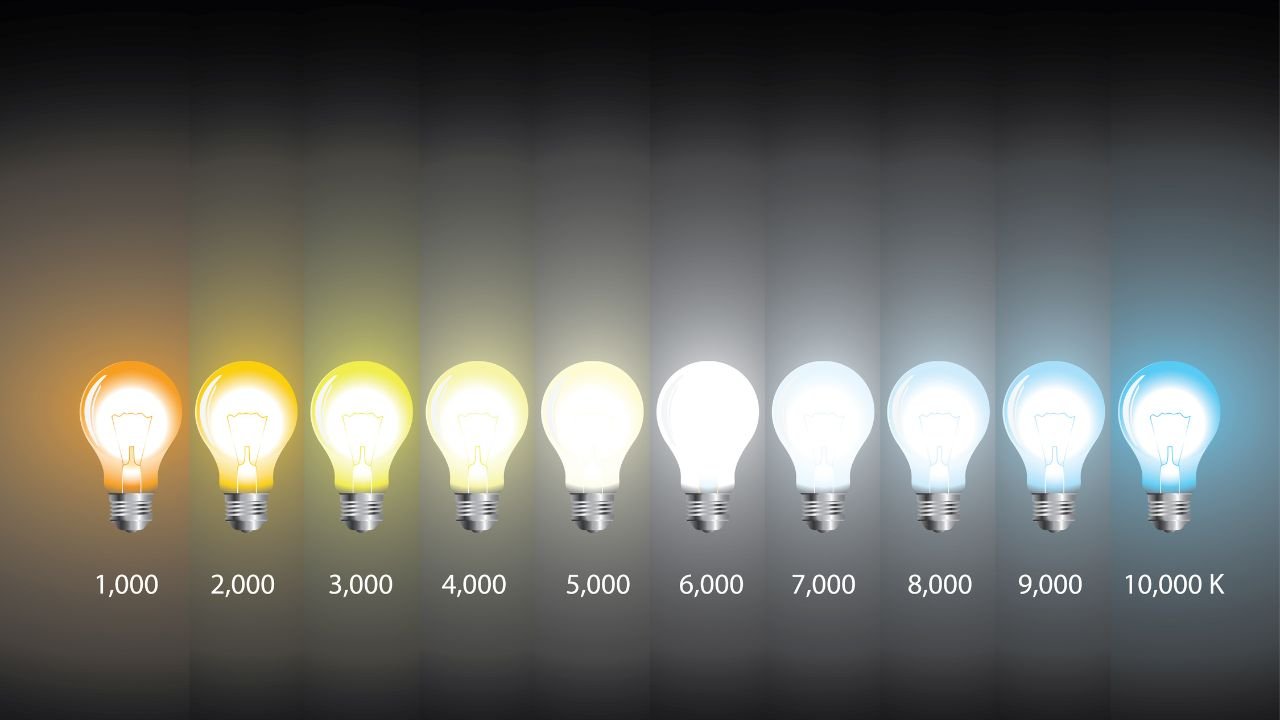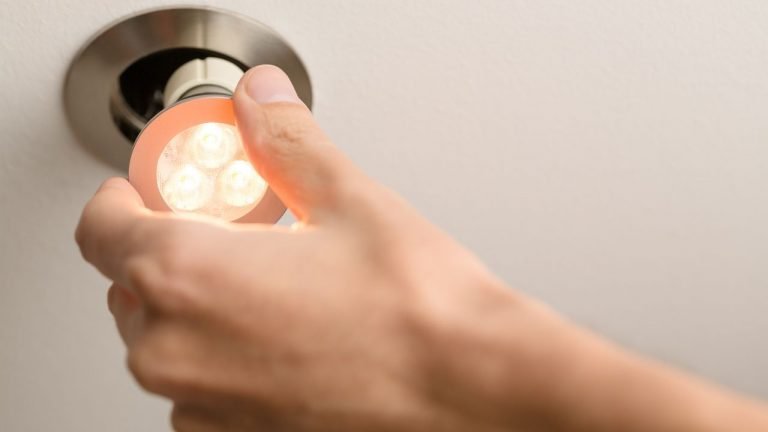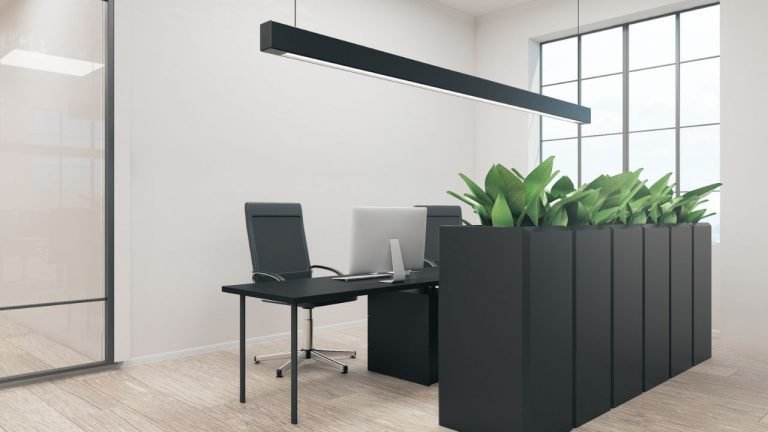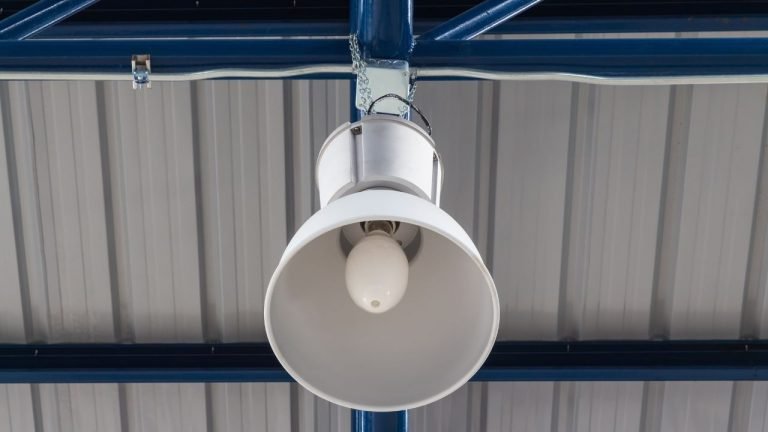Best Color Temperature For Home Office Lighting [Beginner’s Guide]
The color temperature of light determines how you will feel under it. You can have an outstanding LED panel on the ceiling and still feel “sleepy” all the time. does it sound familiar? Then, you must be a victim of the wrong color temperature in your home office. But how do you choose the best color temperature for home office lighting?
The best color temperature for home office lighting is between 4000k to 4500k. If you have wooden decorations inside the office space, you can even go lower to 3500k to match the interior. Or, you can go up to 4500k if the room has darker walls or ceilings. Nonetheless, try to stay within this range.
There is no shortcut to determining the ideal color temperature. You must know all the factors that can change the temperature preference. So, here we are with a detailed analysis of the color temperature that would suit your home office space. Have fun reading.
Let’s Understand CCT (Correlated Color Temperature)
We have to ensure you have a clear understanding of what CCT or correlated color temperature means. Even though the name has the word “temperature” in it, it doesn’t measure heat. Instead, it focuses on the color reflected from a metal when it receives heat to a certain extent. Kelvin scale of temperature is used for measurement. It can reach up to 10,000k.
Look at the chart below. It lists how each temperature represents a different vibe. The lower you go on the scale (2000k or below), the more orangish the light becomes. You will know what we mean if you have lit a candle in a dark room before. The light you see is not perfectly white, is it? That’s because the temperature it provides is within 2000k.
| Color Temperature (k) | Color Tone |
|---|---|
| 2000k | Too orangish (candle light) |
| 2500k-3500k | Warm white |
| 4000k-5000k | Cool (blue/green) tone |
| 5600k-6500k | Broad sunlight |
As you climb higher on the scale, the tone becomes more whitish or bluish. And, at the end of the scale, you have broad sunlight. Normally, 6500k is the highest CCT in the market. You will hardly ever need to cross this level.
Is 5000K Too Bright For Office?
We think 5000k for a home office would be a little over the top. The suggested color temperature for office space is 3000k to 5000k. But we will advise you to stay within the 4000k to 4500k range. That’s because 3000k seems too warm. While 5000k gives a bluish vibe rather than white. Both are very uncomfortable for your eye.
Of course, your preference is all that matters. If you are more comfortable in bright white lights, you can go for 5000k. However, most people who work remotely stick with 4000k as a rule of thumb. Even though it is in the “cool” zone, you won’t notice the blue tone. It’s just plain bright white. It works perfectly for offices that don’t get enough sunlight.
You will notice 5000k CCT in places like hospitals, commercial stores, research labs, and even the surgery room. 5000k is also called the “wake-up” temperature. It’s hard to feel drowsy or sleepy under such lighting. We guess it gives you a clear picture of how the office space is going to look. 5000k falls on the bluish-white side of the color palette. If you want the same “wake-up” effect as a hospital, you can go ahead with it.
Note: Check the CRI rating of the LED bulb before purchasing. It’s a good measurement for color consistency. The higher the number, the more consistent color it can produce.
How Bright Should Office Lights Be?
An office light should be bright enough to let you work comfortably without any eye strain. And, eye strain can happen both for warmer and cooler tones. As you know 2000k imitates the tone of candlelight in a room. Imagine how difficult it would be to read or write without getting uncomfortable.
That’s the same with 5600k to 6000k. In this stage, the light becomes too bright and bluish. It exposes our retina more and ends up causing eye irritation.
So, now you know what to avoid while looking for office light. Now, we must admit there’s no perfect temperature for every need. Each CCT creates a unique environment. That being said, the right temperature differs due to personal taste as well.
Office Aesthetics
For example, if you care about aesthetics a lot, you might go for a temperature that makes the office look good. Most people go for 3500k as it brings warmth to the place. Especially if you have wooden furniture (desk, and shelves) or floor in the office, 3000k to3500k would give a surreal view. Or, if the room has more modern structures with neutral colors like grey, and off-white, go for 4000k. The extra brightness would balance out the dark shades.
Work Type
It also depends on the type of work you do. For example, as an artist who needs to take care of every small detail of a project, you can choose from 4500k to even 5000k. 5000k mimics the broad sunlight during noon. It will be easier for you to notice mistakes or tiny errors under such lighting.
But, if you do computer work only, 5000k can be too much. Moreover, the brightness can wash out your computer screen completely. It’s better to stick with 3500k to 4000k. Since the computer screen itself works as a source of light, you can avoid higher temperatures and keep it warm.
Office Set Up
Where you have set up your office space should be considered too. If the home office is near a big window, chances are it lets enough sunlight into the room. So, you can easily get away with a warmer tone.
On the other hand, if the room doesn’t have access to natural light, the light temperature (bright white) has to compensate for that.
Best Light Color For Computer Work
When it comes to choosing a light color for computer work, there are numerous opinions. And, each has its justification. Some would say warmers tones like orange or yellow are better. Because it feels more relaxed during long hours.
While the others defend bluish white. Because research says “blue” light makes us feel more refreshed and make sure more attentive and productive. Since we are talking about workspace, productivity should be an important factor.
Now, before we tell our opinion, let’s take a look at different color tones and their benefits. So that, you won’t be biased and make a more knowledge-backed decision.
Warmer Tones
By warmer tones, we mean orange or yellow. These shades can bring warmth or coziness to a place. Here are some core benefits you can expect from this.
No-Glare
Every remote worker tries his best to avoid glare. Especially if you have a direct light source right above the desk, it can cause a glaring issue. The entire screen gets flushed out because of too much light exposure. Luckily, warmer tones don’t create any glare on the computer screen. It doesn’t matter whether you set up the desk, you can enjoy working on the screen anytime without stressing your eyes.
Moreover, avoid overhead lighting at all costs to reduce glaring. Follow this article to find out ways to light up a home office without overhead lighting.
Relaxed Vibe
Warmer tones create a “relaxed” vibe in the office space. It indirectly calms you during long hours of work. Plus, reports say that it is easier to continue tasks under warm lighting. Because the brain assumes we are “working.” So, you feel less fatigued. Unless the job requires a lot of brainstorming, your brain won’t be triggered.
Limitations
One big problem with warm colors is that they are more suitable for bedrooms. It makes us feel relaxed. Some argue that you might not be very productive under such lighting.
Cooler Tones
By cooler tones, we mean blue and green. Those are the most popular “cool” lighting tones available. Let’s check out its advantage and disadvantage during computer work.
More Productivity
No doubt, you feel the most productive under a “blue” colored light. Research has found that, cooler tones especially blue triggers our retina the most. It becomes more aware of the surrounding and become focused. It helps to put us in the “work mode.” Especially if you suffer from procrastination, blue is the go-to color for your lights.
Limitations
Blue/green color lights tend to make you feel at work. But at the same time, it triggers stress and fatigue. You miss the relaxed vibe here.
Our Recommendation
Now it’s time to reveal what we feel is right for your home office. We think it’s better to keep the space warm. Nowadays every remote worker uses computers as a way of communication. And, the computer screen itself is quite illuminated. It is enough for you to do the job. There is no requirement for 5600k to 6000k lighting that will imitate natural sun rays.
We recommend you to even keep the curtains off. This will significantly reduce any glaring effect. Also, if you have installed several lights in the room, make sure that all of them have the same CCT. Otherwise, the purpose of giving comfort to your eyes will fail miserably. If you want to learn about the ideal light set up for computer work, follow our article.
Final Note
Remote workers often neglect the color temperature before buying lights. And, they pay for it by stressing out their eyes. We don’t want you to face the same consequences. That’s why we have analyzed the best color temperature for home office lighting.
Although there is no straight answer for that question, we have tried to give you different perspectives and insights. So that you can pick an ideal CCT based on your situation and preferences.
If you are still confused, you can just take our recommendation. With that, we are signing off. Hopefully you enjoyed the article.







